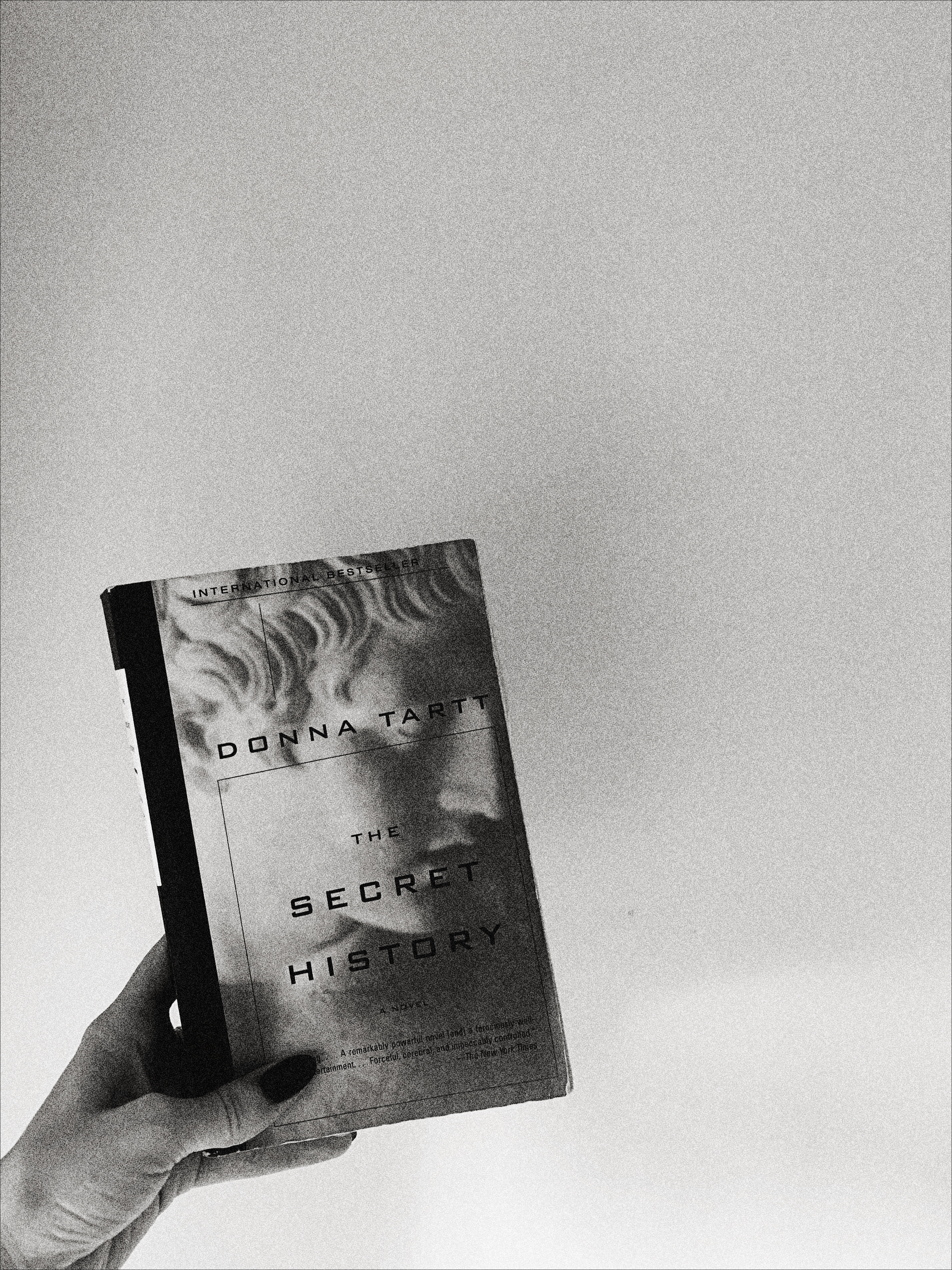The Secret History
by Donna Tartt

In the prologue of The Secret History by Donna Tartt, Bunny, the object of this story, is murdered. The ensuing plot, which is really a rewind, is shadowed by this fact, and the reader is constantly looking for clues for what went down. Richard, our narrator, proceeds to tell the story of the precise intersection at which his life converged with the wrong crowd.
Richard is an observer. From California, he transfers colleges to a small school in Vermont, where he meets a clique of odd characters enrolled in an exclusive Greek curriculum at Hampden College. This curriculum is headed by Julian Morrow, who forces you to drop all other courses and all other professors for the sake of his superior apprenticeship. He has only 5 students, adding to the mystery of this opportunity. Richard’s intrigue for this small cohort builds, and he wedges his way into the group, dropping all other courses and their possibilities for a dead language and its constituents.
Bunny’s death is clearly related to the mystery of this group. As we get to know him, we find out he’s a big spender and big talker, with no money or substance to support either trait. He likes fancy restaurants and high status. He comes from money, but his family has cut him off, so he’s constantly weaseling his way out of accountability for the bill. There is a sadness to him, too. He’s preoccupied with status and money and getting things from other people. His relationship appears to be unfulfilling for him. He’s drunk often.
The first suspect for Bunny’s death is Julian. He’s elusive and exclusionary. He idolizes his own intellectualism. We only really ever find him behind closed doors and speaking in another language. The context of his nature — the secret language by which his professional life is defined — and his isolationism from other professors is a red flag.
Then there are the other Greek students: Henry, Camilla, Charles, and Francis. The vibe from this group feels trauma bond-y, like they’ve cocooned themselves from the outside world for the safety of their studies. All of them seem harmless at first, if not as warm as Richard would hope, and all very similar. They are all very Book Character-y™, with Henry’s pince-nez and long trenchcoat, Francis’ height and bright red hair, and the weird sexual energy between the twins, Charles and Camilla.
Every now and then we are reminded that this is the retelling of a story from a vantage point somewhere in the future where enough time has passed that there’s an amber glow over the memory, and not the story itself. It’s why the story feels so legendary and folklore-y. We are not living through these events with Richard, but sitting with him and listening as he remembers it, like he’s watching a movie he’s already seen and relishing in his knowledge of the ending. The result is a sense of fate over it all, that this was all destined to happen. These events have been committed to the law of time and space, not to mention to the warping that’s inherited from Remembering. There’s no rewriting history — no revising violence in the grooves of the brain.
Violence has a dual role in this book. There is, of course, the violence of murder, but there’s also the dull pain of the constant disturbance of Richard’s sleep, Henry’s consistent headaches, the hangovers, the puzzle pieces of a foreign language. It offsets the feeling of exactness in the writing, that there’s always the inexplicable pain and confusion that the body remembers years later that adds to the feeling of the story. When the people we are surrounded by cause us to be unsettled, we feel it in our memory.
There is an agility about this novel that is lean and diabolical. The choreography of words is stunning. Getting to know each character was like slowly wiping away the steam on a fogged up mirror. Moving through the plot was like watching the passing of a torch for who gets to be the villain. It is the first novel in a long time that I have truly enjoyed and been captivated by.
In the end, it all happens so fast. There is an unraveling and a swift breaking point that almost would have given me whiplash if it weren’t for Tartt’s smooth writing and elegant structuring. Bunny’s death is redeemed as much as a death can be, but at the expense of everyone’s peace, or at least the peace they hoped to gain back after months of paranoia.
The Secret History is a prize. One wrapped up meticulously and strategically, and paced out in expert fashion. This is not a book with any lulls or drags. There is a constant motivation to get to the end, and the path there is marked with cunning wit and an eeriness that spurs your brain toward the mysterious metaphorical knock at the door.

